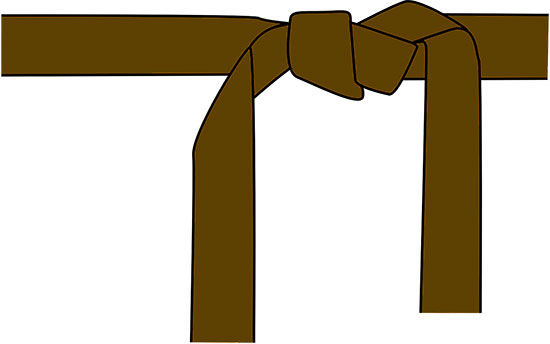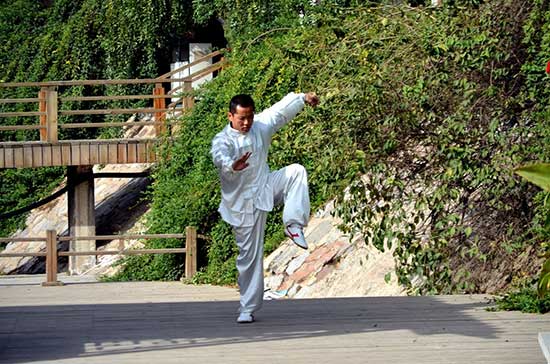Jeet Kune Do, also known as JKD. It is a hybrid martial art style that Bruce Lee founded in 1960. Jeet Kune Do is a traditional martial art and a philosophy and training system emphasizing simplicity, efficiency, and directness in combat.
It uses elements from various styles such as boxing, fencing, Wing Chun, and wrestling by encouraging practitioners to adapt to different situations and find effective ways to defend themselves.
There are no specific techniques in this martial art, and practitioners are encouraged to use their styles based on their strengths and weaknesses.
The training methods include physical training, such as grappling, striking, and weapons training, and mental training, such as visualization and focus.
Jeet Kune Do emphasize footwork and body mechanics by developing speed, power, and flexibility.
It is not only self-defense but also a way of personal development and self-expression and encourages practitioners to be open-minded and constantly seek to improve themselves.
Wing Chun is a traditional Chinese martial art focusing on close-range combat and fast, direct strikes.
It is believed to have originated in the southern Chinese province of Guangdong in the early 18th century and was created by a woman named Yim Wing Chun.
The style is characterized by its use of quick, powerful strikes, blocks and trapping techniques, as well as its focus on using the body’s natural structure and movements to generate power.
Contents
Differences Between Jeet Kune Do and Wing Chun
Wing Chun and Jeet Kune Do are two martial arts that have gained popularity over the past years. However, they differ in origin, philosophy, and techniques.
- Origin: Jeet Kune Do was founded by Bruce Lee in the 1960s in the United States. On the other hand, Wing Chun is a traditional Chinese martial art.
- Techniques: Wing Chun has a set of techniques performed in a specific order. In comparison, Jeet Kune Do has no specific techniques and encourages practitioners to develop their self-defense techniques based on their strengths and weaknesses.
- Philosophy: Jeet Kune Do emphasize simplicity, directness, and efficiency in combat. It encourages practitioners to adapt to different situations and find the most effective ways to defend themselves. In contrast, Wing Chun is characterized by its close-range combat techniques, such as trapping, chi sao, and centerline theory. It emphasizes developing internal energy and relaxation during training.
- Range of combat: Jeet Kune Do is known for its adaptability and versatility. It can be applied to various ranges of combat, such as long-range, medium-range, and close-range. Wing Chun is known for its close-range combat techniques, such as trapping, chi sao, and centerline theory.
| Wing Chun | Jeet Kune Do | |
|---|---|---|
| History and Origin | Chinese martial art that originated in the 17th century | Created by Bruce Lee in the 1960s as a philosophy and fighting system |
| Philosophy | Focuses on efficiency, directness, and practicality in self-defense | Emphasizes the use of personal expression and adaptation to individual needs and circumstances |
| Techniques | Focuses on close-range combat and simultaneous defense and attack, with a strong emphasis on hand techniques and centerline theory | Incorporates techniques from various martial arts, including Wing Chun, boxing, fencing, and more, with an emphasis on fluidity and versatility |
| Training Methods | Practiced in a structured, traditional setting with a focus on forms and drills | Encourages experimentation and freestyle training, with a focus on sparring and adapting to unpredictable situations |
| Combat Strategy | Emphasizes using minimal force to achieve maximum effect, with a focus on ending fights quickly and efficiently | Encourages fighters to be unpredictable and adaptable, using a combination of techniques and strategies to confuse and overcome opponents |
| Belt System | Typically does not have a belt system, with advancement based on skill and mastery of the art | Does not have a traditional belt system, but some schools use a patch or ranking system to denote experience and achievement |
| Influence | Has influenced various martial arts, including Bruce Lee’s Jeet Kune Do | Has influenced various martial arts and combat sports, including mixed martial arts (MMA) |
Similarities
Despite the differences in origin and techniques, Wing Chun and JKD also have similarities.
- Both styles focus on using minimal movements and maximum power in combat. They both emphasize developing good footwork and body mechanics, which are crucial for efficient movement and generating power.
- Jeet Kune Do and Wing Chun places importance on the economy of motion, which means using the least amount of energy and effort to achieve the desired outcome.
- Both styles also focus on developing speed, power, and flexibility. Jeet Kune Do and Wing Chun practitioners are trained to react quickly and deliver powerful strikes while also being able to move and adapt to different situations.
- Both styles also focus on developing the ability to read and react to an opponent’s movements rather than relying solely on pre-set techniques.
- Jeet Kune Do and Wing Chun also share a common emphasis on the importance of self-expression and personal development. Both styles aim to improve the practitioner’s overall physical and mental well-being and help them become more self-aware and confident in their abilities.
What to Choose?
Choosing between Wing Chun and Jeet Kune Do depends on personal preference and goals. If you are interested in traditional Chinese martial arts and internal energy cultivation, Wing Chun may be a better fit.
Wing Chun is characterized by its close-range combat techniques, such as trapping, chi sao, and centerline theory. It also emphasizes developing internal energy and relaxation during training.
On the other hand, Jeet Kune Do may be more suitable for you if you prefer a more adaptable and versatile approach to martial arts.
It is a mixed martial art that combines elements from different styles, such as Wing Chun, boxing, fencing, and wrestling.
It encourages practitioners to adapt to different situations and find the most effective ways to defend themselves.
Generally, it is important to practice both styles and choose which is favorable to you and fits your personal needs.
Closing Thoughts
Jeet Kune Do and Wing Chun are both effective martial arts styles with distinct philosophies and techniques, but they both share the goal of training the mind and body to improve combat effectiveness.
What to choose between the two martial arts depends on your personal goals and preferences. It is important to practice both martial arts to gain experience and outcomes before deciding on what to choose.





